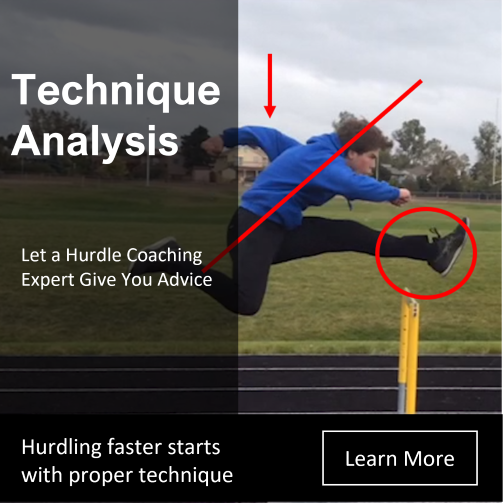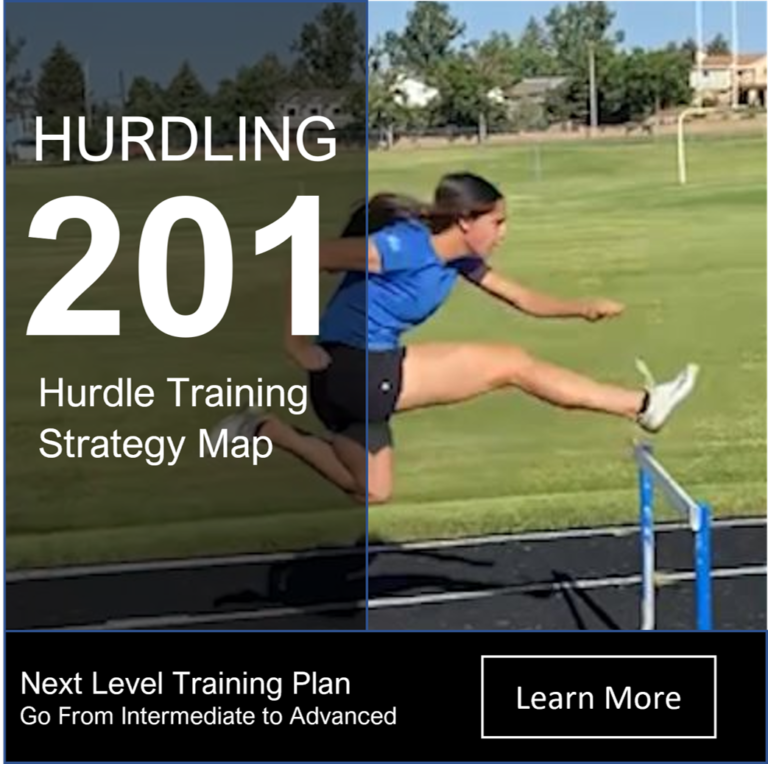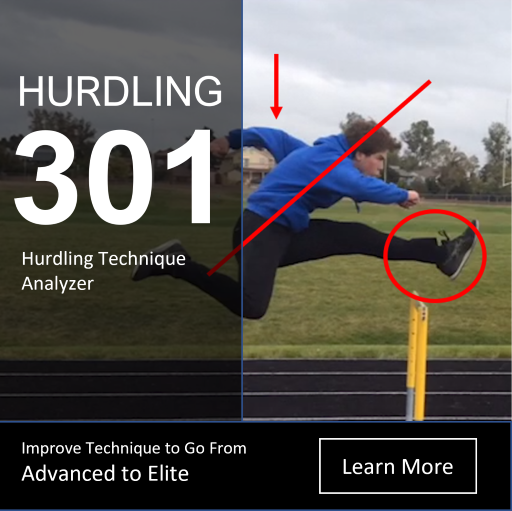How to Hurdle
If you’re reading this article about How to Hurdle, my assumption is that you mostly want to learn about hurdle technique, so that’s the main focus of this article. I included hurdling steps (to the first and hurdle and between hurdles) just in case. I also have an article specifically about the 100 meter hurdles if you want to know more about that race.
Before We Get Started: Determining the Lead Leg
There are several clever ways that people teach an athlete about trail legs, but I have this approach. Ask yourself: What leg would you kick a ball with if you wanted it to go really far? What side do you prefer to approach a layup in basketball? You will likely have the same answer for both. Whichever leg was you answer, that is likely your best lead leg.
How to Hurdle: Technique
Approaching the hurdle
You should run at the hurdle as fast as possible. When you have reached the proper distance from the hurdle (approximately 1.5-2 meters) and hopefully with the correct foot, plant your foot and lean into the hurdle. Here’s what should be happening to your arms and legs during this phase:
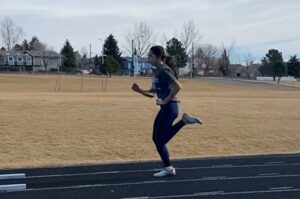
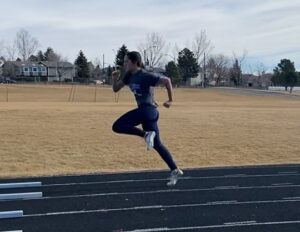
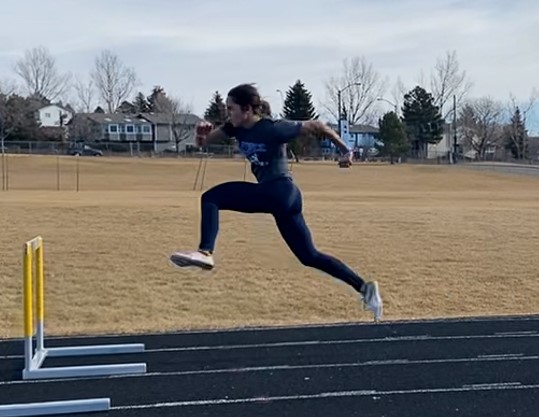

Lead leg
The lead leg should cycle underneath your body just like the normal sprinting motion, but continue extending at the knee until it is almost fully extended. Once the heel passes the hurdle, you should bring the foot back to the ground.
Lead Arm
In general, both arms should stay bent at approximately 90 degrees at all times. The arm opposite of the lead leg is the lead arm. As you plant your foot and lunge toward the hurdle, your lead arm will extend forward.
Trail Leg
The plant leg should fully extend to propel you towards the hurdle.
Trail Arm
The trail arm should also stay at 90 degrees. As your lead arm moves forward, your trail arm swings back so your hand is at or just behind the hip and swings back to continue the running motion.
Descending the Hurdle
Lead Arm
Once you reach the apex of your movement, your lead arm comes back to 90 degree (if extended past) and starts to scoops back. If in the right position, your hand should move past your trail knee as the trail leg moves forward.

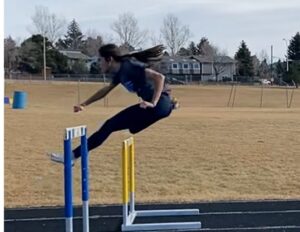
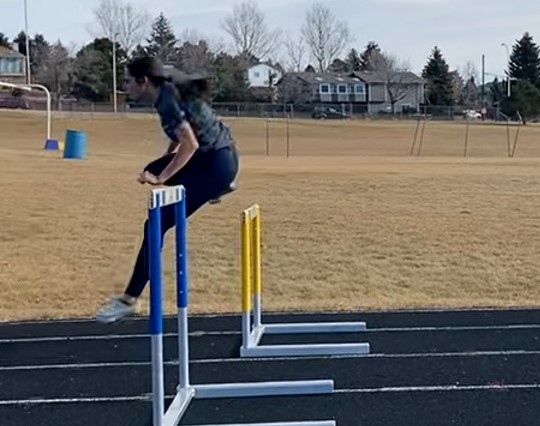

Trail Leg
The trail leg should move forward with a high knee that stays higher than the foot. The knee should stay high until the lead foot touches the ground. The emphasis at this point should be the lead leg is the powerful first step toward the next hurdle.
Lead Leg
As soon as the heel of the lead leg passes the hurdle, you should start to lower it to the ground.
Trail Arm
The trail arm swing back forcefully to the running position. This action helps propel the hips forward which helps lowers the lead leg quickly and gets the hurdler back to an upright running position as fast as possible.
Low Curve
Also, very important to hurdle success is the hurdlers ability to stay low over the hurdles to avoid jumping and landing. Jumping and landing is slow and takes too much energy. The lower you can stay maintains good forward motion and speed.
Conversely, you not go too low, especially if you are tall. This could slow you down as well. In general, you want to feel like you are moving horizontal through the hurdles instead of jumping over them.
Hurdle Races
In case you’re also looking for information on hurdle races, here is some information. Hurdles races fall into two categories, Sprints (100m 110M) and Distance Hurdles (300-400m).
Sprint Hurdles
The female’s version of the sprint hurdle is the 100 meter hurdles. The male’s version is the 100 hurdles in some youth races, but starting in high school, 110 meters is the standard.
Sprint Hurdles Steps
The goal for virtually all hurdlers is to take 8 steps to the first hurdle and the 3 steps between each hurdle, going over the hurdle on the 4th step. This doesn’t always work for youth and developing hurdlers. To learn more, check out 100 meter hurdles.
Distance Hurdles
The number of steps to the first hurdle and in between each hurdle in the long (distance) hurdles is not nearly as predictable as the sprint hurdles. It also varies greatly depending on age group. I’ll save this topic for another article.
Getting Help With the 100 Meter Hurdles
Hurdling is not any easy event to learn on your own. There are so many technical aspects to it that are difficult to see on your own. It takes a trained eye to spot them. There are two ways two ways to get the coaching you will need:
- Find a coach in your area. You’ll likely have to look for a track club and ask if they have a hurdle coach. I suggest looking are a USATF or AAU track club. Hopefully here is one near you.
- Let me help you. There simply aren’t a lot of hurdle coaches out there. To meet the needs of athletes that need coaching help, I have created these products and services. Hopefully one of them will meet your needs.
Hurdle Coaching Services

